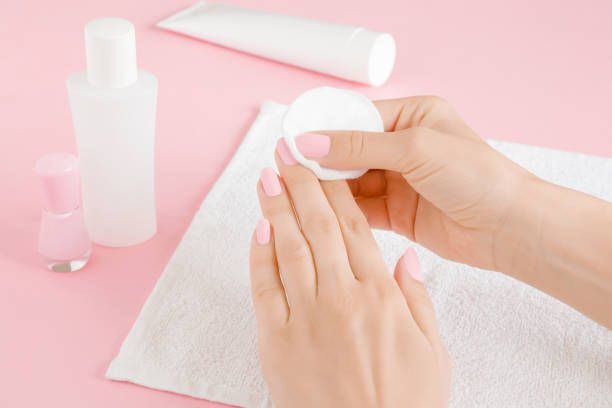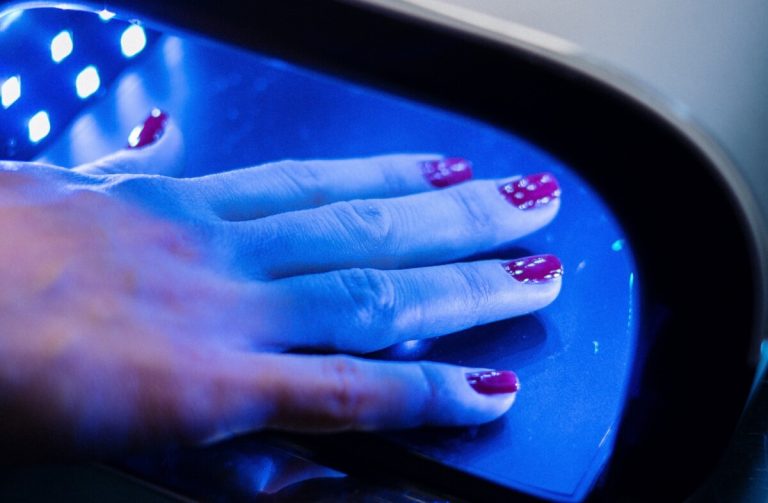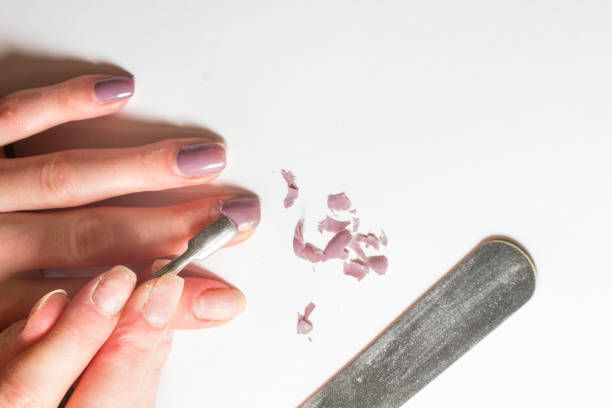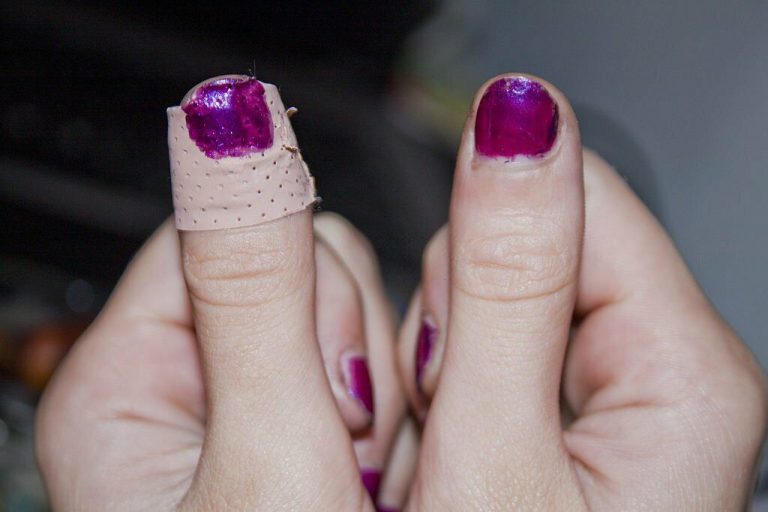Does Nail Polish Remover Expire?
Removing old nail polish can be a hassle, especially if you let it build up over time. When you finally get around to taking off those chipped, discolored layers, you reach for your trusty bottle of nail polish remover—but is it still good? Nail polish remover has a reputation for lasting indefinitely, but like any product, it can degrade over time and become less effective.
In this guide, we will cover everything you need to know about nail polish remover expiration timelines. You’ll learn how to identify if your remover is past its prime, what ingredients cause it to expire, whether expired remover is safe to use, and more. With this information, you’ll know if your nail polish remover is still kicking or if it’s time to replace it.
Does Nail Polish Remover Expire?
Contents
- Does Nail Polish Remover Expire?
- Can You Still Use Expired Nail Polish Remover?
- What Happens If You Use Expired Nail Polish Remover?
- Does Expired Nail Polish Remover Change Color?
- Does Expired Nail Polish Remover Smell Bad?
- Does Acetone Expire?
- How Long Is Acetone’s Shelf Life?
- What Ingredients Are In Nail Polish Remover?
- Is Nail Polish Remover Toxic?
- Does All-Natural Nail Polish Remover Expire?
- Do Nail Polish Remover Wipes Expire?
- Is Using Older Nail Polish Remover Worth It?
- Conclusion
- Frequently Asked Questions
Nail polish remover doesn’t technically expire. Since it’s a solvent, the ingredients don’t break down over time like those in skin care products or makeup. However, you will notice some slight changes to the remover as it ages.
The acetone and other solvents in nail polish remover evaporate slowly over time. After about two years, you’ll notice the remover looks more watered-down and slightly discolored. The older it gets, the more the color fades from the original bright blue or pink hue.
These changes don’t necessarily mean the remover has “expired” in the traditional sense. The color and thickness changes are normal as the product ages. As long as the nail polish remover still removes polish effectively, it’s still good to use.
Compared to other beauty products, nail polish remover has a relatively long shelf life. Mascara should be replaced every three months since using old mascara can cause eye infections. Foundations generally last around a year before separating or smelling off.
Nail polish remover lasts much longer, with a shelf life of about one to two years. Since it’s a solvent, it holds up better than makeup or skin care items, which degrade more quickly. Just keep in mind that the older it gets, the weaker its nail polish removing abilities become.

Can You Still Use Expired Nail Polish Remover?
The first question most people have about expired nail polish remover is – can I still use it safely? The good news is that using nail polish remover past its expiration or “best by” date is highly unlikely to carry any risks or have harmful effects.
Nail polish remover does not become toxic or dangerous as it ages. The main concern with expired nail polish remover is simply a loss of effectiveness. Older remover may take longer to break down layers of polish and require more scrubbing to remove color.
As long as you store nail polish remover properly in a cool, dark place, it should retain its safety even after expiration. You don’t have to worry about expired remover causing any issues if it comes in contact with your nails or skin. However, it may take more effort and patience to remove polish if the remover is very old.
What Happens If You Use Expired Nail Polish Remover?
Given that using expired nail polish remover is safe, the only real downside is that it likely won’t work as well. As remover ages and some of the solvents evaporate or degrade, it loses its strength and ability to dissolve nail lacquer.
You’ll likely notice it takes significantly longer to remove coats of polish if you use expired nail polish remover. It may require vigorous scrubbing and soaking for the expired remover to break down thick, pigmented nail polish. Where fresh remover takes off polish quickly and easily, expired remover can turn the process into a struggle.
If you’re in a pinch and need to remove nail polish, expired remover will get the job done – it just won’t be as fast or effortless. Plan to allot more time and elbow grease if using a remover that’s past its prime. A fresh bottle of nail polish remover will save you time and energy.
Does Expired Nail Polish Remover Change Color?
You may notice some changes in the look of your nail polish remover as it gets older. The most common visual cue that remover has expired is a change in color or discoloration.
Fresh nail polish remover is typically clear. Over time, though, it can start to take on a yellow, brown, or orange tint. Acetone-based removers will often develop a yellowish color after a year or two. This discoloration signals degradation of some of the ingredients.
Aside from yellowing with age, you may also notice your nail polish remover looks more diluted or watered-down in consistency. The solution will appear less opaque and may take on a cloudy look as the remover expires. If you see any odd colors or a weakened formula, your remover is definitely past its prime.
Does Expired Nail Polish Remover Smell Bad?
In addition to changing visually, expired nail polish remover may smell different too. Fresh remover has a potent, chemical odor from the solvents like acetone or ethyl acetate. This strong smell is familiar to most users.
However, as remover expires, you’ll notice the scent is not as intense or sharp. The chemical compounds that give nail polish remover its signature smell begin to break down. An expired bottle of remover will have a muted, weaker odor.
If you don’t get that punch of acetone smell when opening your nail polish remover, that’s a clear sign it’s expired. The evaporating acetone compounds make the scent fade over time. Trust your nose – if the smell is lackluster, the remover’s quality is too.
Does Acetone Expire?
Many popular nail polish removers use acetone as the main solvent. One hundred percent pure acetone actually has an indefinite shelf life if stored properly. The chemical structure of acetone remains stable over many years if kept sealed in a cool, dark space.
For removers formulated with 100% acetone, the product can technically last and remain potent indefinitely. However, most nail polish removers contain acetone diluted in other ingredients that do expire and degrade over time.
The pure acetone itself may not lose efficacy, but other expired components of the remover can impact the overall performance. So while pure acetone does not expire, acetone-based nail polish removers still have a functional expiration date.
How Long Is Acetone’s Shelf Life?
On its own, acetone has an indefinite shelf life and does not degrade when stored correctly. The shelf life of pure, 100% acetone is several years or longer if kept sealed and away from light or heat.
However, for nail polish removers that mix acetone with other solvents and ingredients, the shelf life is around 1-2 years. The acetone retains its potency, but the other components of the remover start to separate or evaporate around that mark.
For an unopened bottle of remover containing acetone plus other ingredients, expect 1-2 years of optimal performance once opened. If you notice fading over time, acetone likely isn’t the culprit – other expired ingredients impact the remover.
What Ingredients Are In Nail Polish Remover?
To understand why nail polish remover expires, it helps to know what’s in it. Here are some of the primary solvents and ingredients:
- Acetone: The most common active ingredient in removers. Has an indefinite shelf life on its own.
- Isopropyl alcohol: Another solvent, this evoporates more quickly over time.
- Ethyl acetate or methyl acetate: Added to enhance acetone’s nail polish removal abilities.
- Fragrances: For scent. The perfumes and aromas fade as the remover expires.
- Nourishing oils: Vitamin E, olive oil, etc. can degrade and separate from the remover formula over time.
The expiring oils, fragrances, and solvents other than pure acetone cause the decline in remover performance and quality. Acetone keeps its strength, while other components lose efficacy and potency.
Is Nail Polish Remover Toxic?
Since we’re applying nail polish remover directly to our nails and skin, it’s natural to wonder – is it safe? While most removers are formulated to avoid harm, using them incorrectly can raise some health concerns.
Acetone and other solvents present minimal risk with normal use. However, excessive inhalation of fumes over long periods may cause systemic toxicity. Proper ventilation is key.
To use nail polish remover safely:
- Avoid contact with eyes, nostrils, and lips
- Use remover in well-ventilated area
- Limit skin contact time
- Keep away from open flames, as acetone is flammable
With prudent use, nail polish remover carries very little toxicity risk. Dispose of used cotton balls promptly and allow nails to dry before reapplying polish.
Does All-Natural Nail Polish Remover Expire?
All-natural nail polish removers are popular alternatives containing ingredients like soy, lavender oil, and lemongrass. These plant-based removers generally do not have an expiration date.
However, similar to traditional removers, natural nail polish removers may become less effective over time. The oils can separate and essential oils lose aroma. While they don’t technically “expire,” natural removers can degrade.
Check for separation of ingredients or lack of fragrance. A natural nail polish remover past its prime will take longer to remove polish, just like a traditional expired remover.
Do Nail Polish Remover Wipes Expire?
Another nail polish remover format are pre-soaked wipes or pads. Unfortunately, these are more susceptible to drying out over time.
The remover liquid can evaporate from the wipes, leaving them stiff and unable to dissolve polish. However, if properly sealed, remover wipes may last about 6 months before drying out.
Check wipes for any stiffness or dry patches – a sign the remover has evaporated and they’ve expired. Well-sealed wipes in an undamaged package should still be moist and usable for a few months.
Is Using Older Nail Polish Remover Worth It?
At this point, you’re well-versed in signs your nail polish remover has expired. But is it worth still trying to use older remover?
The main consideration is the time and effort required to remove polish with expired remover. It will still get the job done, but likely require vigorous scrubbing for 10-15 minutes per nail.
Whether dealing with the hassle is worthwhile depends on your circumstances. If you only need to remove polish from a couple nails, using up the expired bottle may make sense. But for a full manicure removal, you’ll save energy by using fresh remover that works quickly.
Ultimately, it comes down to personal preference and tolerance for the extra work expired remover demands. Evaluate the effort vs. reward as you decide whether to toss or keep that aging bottle.
Conclusion
To wrap up, here are the key takeaways on nail polish remover expiration:
- Nail polish remover does not truly “expire” in terms of safety. Old remover isn’t dangerous, just weaker.
- Check remover for discoloration, separation, and faded smell to identify if it’s expired.
- Acetone-based removers have longer shelf lives of 1-2 years after opening.
- Expired remover will still remove polish, but requires more time and work.
- Consider effort vs. reward when deciding whether to use up old remover.
- Dispose of remover properly and allow nails to dry after use.
Knowing what to look for will ensure you can get the most out of your nail polish remover. And remember – when in doubt, fresher is better for easy, fast lacquer removal!
Frequently Asked Questions
How do I properly dispose of acetone nail polish remover?
Due to its flammable nature, acetone should not be poured down the drain. Allow used remover to fully evaporate in a well-ventilated area, then deposit the empty container in the garbage. Never pour large amounts of acetone down sinks or toilets.
Does unopened nail polish remover expire?
Unopened acetone-based nail polish remover has a longer shelf life of 3-5 years. Tightly sealed, unopened bottles help prevent evaporation and maintain the remover’s strength longer. Opened bottles have a shorter 1-2 year prime usage window.
How should I dispose of old or expired nail polish?
Leftover nail polish should be treated as household hazardous waste. Check for local hazardous waste collection events to properly dispose of nail polishes. Never pour polish down drains or into normal trash. Allow wet polish to fully dry out before discarding the container.
What happens if you use rancid nail polish?
Using expired or rancid nail polish is unlikely to have serious consequences beyond potential product performance issues. However, fungi and bacteria can contaminate old nail polish. To be safe, throw away nail polishes past their prime don’t use polishes that smell odd or appear clumpy/separated.

Founded by Sophia Rodriguez, IGXO Cosmetics is a PETA-certified, cruelty-free, and vegan makeup brand.





